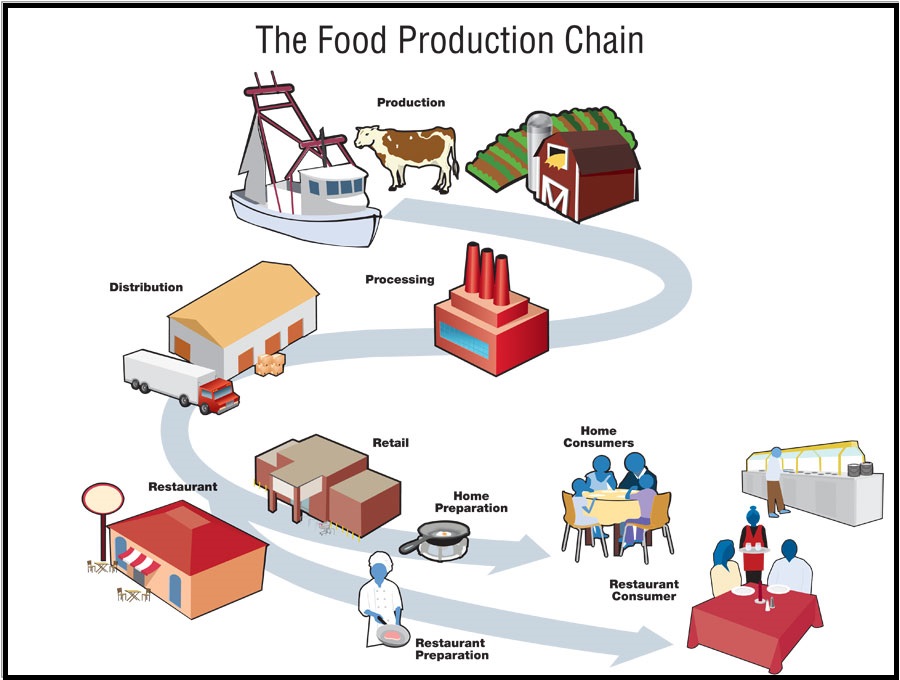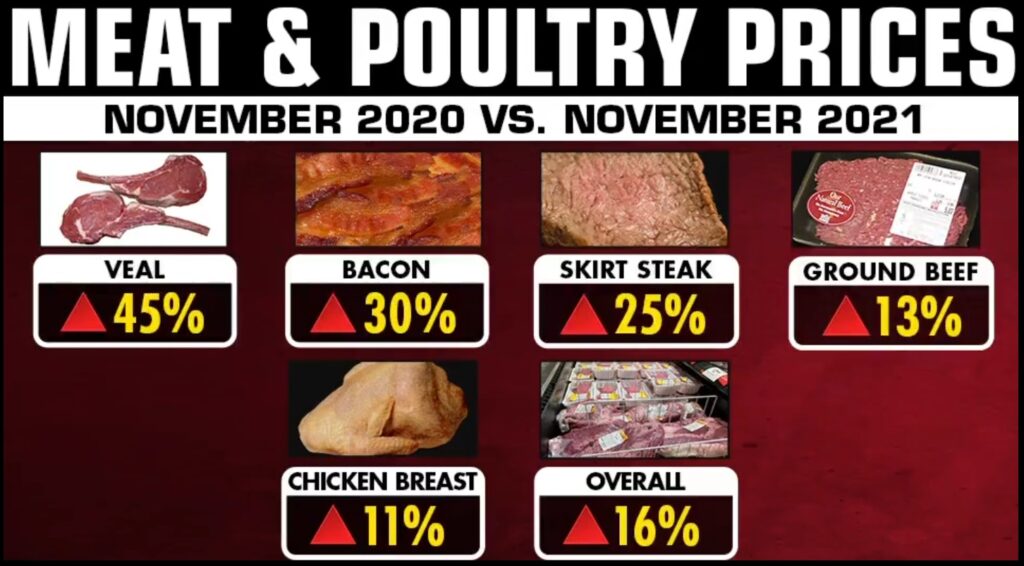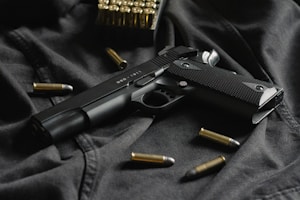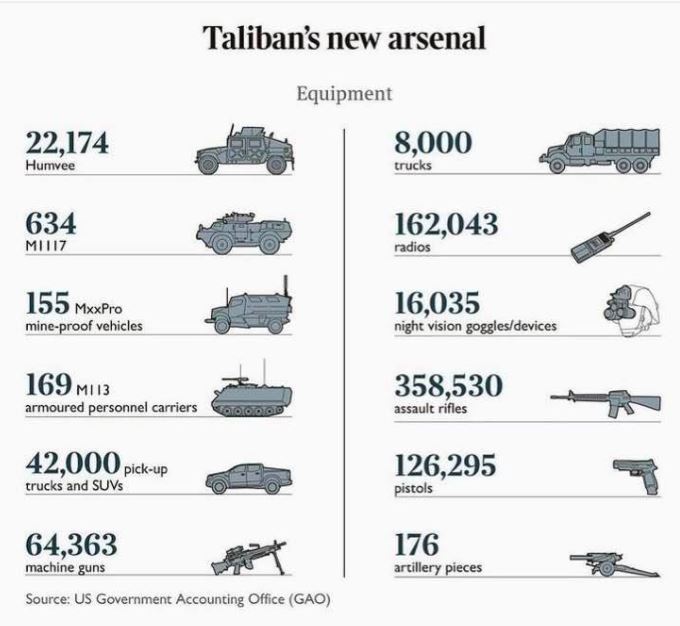Category: Some Scary thoughts
Some Red Hot Gospel there!
Things to Look For…
Things that seem disconnected but aren’t. The thirteen bullet points below are the issues we will first notice as the general food supply chain begins show signs of vulnerability. This outline explains why it is happening and how long it can be expected.
In the previous October, November and December warnings we emphasized preparation and counted down the 90-day window. Now, as we enter the final two weeks before mid/late January, the date of our original prediction, it appears that some media are starting to catch up and the larger public is starting to notice. [NOTE: We nailed the timeline almost to the week]
Feel free to note in the comments section what is happening in your area. Hopefully, most of us are much better positioned than the average person who has not been following this as closely over the past several months.

Initial food instability signs in the supply chain. Things to look for:
(1) A shortage of processed potatoes (frozen specifically).
And/Or a shortage of the ancillary products that are derivates of, or normally include, potatoes.
(2) A larger than usual footprint of turkey in the supermarket (last line of protein).
(3) A noticeable increase in the price of citrus products.
(4) A sparse distribution of foodstuffs that rely on flavorings.
(5) The absence of non-seasonal products.
(6) Little to no price difference on the organic comparable (diff supply chain)
(7) Unusual country of origin for fresh product type.
(8) Absence of large container products
(9) Shortage of any ordinary but specific grain derivative item (ex. wheat crackers)
(10) Big brand shortage.
(11) Shortage of wet pet foods
(12) Shortage of complex blended products with multiple ingredients (soups etc)
(13) A consistent shortage of milk products and/or ancillaries.
These notes above are all precursors that show significant stress in the supply chain. Once these issues are consistently visible, we are going to descend into food instability very quickly, sector by sector, category by category.
At first, each retail operation will show varying degrees of the supply chain stress according to their size, purchasing power, and/or private manufacturing, transportation and distribution capacity.
♦ BACKGROUND – Do you remember, the dairy farmers in 2020 dumping their milk because the commercial side of milk demand (schools, restaurants, bag milk purchasers) was forcibly locked down? Plastic jugs were in short supply, and the processing side of the equation has a limited amount of operational capacity.
Potato farmers and fresh food suppliers were also told to dump, blade or plough-over their crops due to lack of commercial side demand. These issues have longer term consequences than many would understand. These are fresh crops, replenishment crops, which require time before harvest and production.
The retail consumer supply chain for manufactured and processed food products includes bulk storage to compensate for seasonality. As Agriculture Secretary Sonny Perdue noted in 2020, “There are over 800 commercial and public warehouses in the continental 48 states that store frozen products.”
Here is a snapshot of the food we had in storage at the end of February 2020: over 302 million pounds of frozen butter; 1.36 billion pounds of frozen cheese; 925 million pounds of frozen chicken; over 1 billion pounds of frozen fruit; nearly 2.04 billion pounds of frozen vegetables; 491 million pounds of frozen beef; and nearly 662 million pounds of frozen pork.
This bulk food storage is how the total U.S. consumer food supply ensures consistent availability even with weather impacts. As a nation, we essentially stay one harvest ahead of demand by storing it and smoothing out any peak/valley shortfalls. There are a total of 175,642 commercial facilities involved in this supply chain across the country
The stored food supply is the originating resource for food manufacturers who process the ingredients into a variety of branded food products and distribute to your local supermarket. That bulk stored food, and the subsequent supply chain, is entirely separate from the fresh food supply chain used by restaurants, hotels, cafeterias etc.

Look carefully at the graphic. See the fork in the supply chain that separates “food at home (40%)” from “food away from home (60%)”?
Food ‘outside the home’ includes restaurants, fast food locales, schools, corporate cafeterias, university lunchrooms, manufacturing cafeterias, hotels, food trucks, park and amusement food sellers and many more. Many of those venues are not thought about when people evaluate the overall U.S. food delivery system; however, this network was approximately 60 percent of all food consumption on a daily basis.
The ‘food away from home‘ sector has its own supply chain. Very few restaurants and venues (cited above) purchase food products from retail grocery outlets. As a result of the coronavirus mitigation effort, the ‘food away from home’ sector was reduced by 75% of daily food delivery operations. However, people still needed to eat. That meant retail food outlets, grocers, saw sales increases of 25 to 50 percent, depending on the area.
Covid regulations destroyed this complex supply chain in 2020. It takes time to recover because the replenishment is based on harvest cycles. This stuff must be grown.
When the food at home sector was forced to take on the majority of food delivery, they immediately hit processing constraints. The processing side of the supply chain to funnel food into suppliers for the grocery store has “x” amount of capacity. That system cannot (not feasible) and did not expand to meet the 20 to 50% increase in demand.
Think about potatoes. A potato farmer sells into one of the two paths “food at home” (retail stores, or a processing supplier) or “food away from home” (commercial food or commercial food processors). Other than bulk raw potatoes, the harvest goes into: (1) processing or (2) storage.
(1a) processing for retail sales (40%), ex. Ore Ida frozen potatoes, canning, or any of the other thousand retail products that use potatoes, whole or mashed.
(1b) processing for commercial sales (60%), ex. McDonalds french fries, or any of the thousand restaurant, lunchroom and cafeteria needs that use potatoes, whole or mashed.
♦ Processing – When 1b was shut down in 2020, 1a quickly reached maximum retail processing capacity. Massive multi-million machines and food processing systems have a capacity. The supplies they use also have a capacity: plastic bags, cardboard, trays, bowls, etc. The 1a processing system can only generate “X” amount of retail product at maximum capacity.
The remaining 1b commercial product was shut down. A massive percentage of 1b (commercial) potatoes have nowhere to go, except waste.
♦ Storage – Each processor in 1a stores product (deep cold or frozen storage) for 365-day processing and distribution. Those storage facilities have a limited amount of capacity. The 1b customers need fresh product for the majority of their outlets. Ergo storing for 1b customers who might eventually be allowed to open later only works for a short period of time. The fresh potato sales missed by 1b outlets = the 1b discard by potato farmers.
When you restart 1b suddenly the 1b short-term (fresh) storage product is quickly depleted. Refilling that 2020 storage is dependent on a new 2021 harvest, which simultaneously has a greater immediate demand because the supply chain on the processing side was boxcar’d (over capacity) and then reset to a higher capacity playing catchup.
The amount missing from 2021 storage, because it was used instead of saved, is essentially equal to the amount that was wasted in 2020.
Now you end 2021 will less reserves because storage is depleted, because a greater percentage of the current harvest was immediately used. You enter into the beginning of 2022 (winter) in a race to try and spread out the stored potatoes as you cross your fingers and race against the clock for the next harvest before running out.
You probably noticed – but attached to this issue is yet another motive to keep people (employees) away from large industrial cafeterias and even students from school lunchrooms. The total food supply chain needs time, and harvests, to catch up.
In the example above you can replace *potato* with just about any row crop or retail/commercial food commodity like milk.
The reason I list the shortage of potatoes as the #1 precursor is because every food outlet sells a potato in some form. Every supermarket and every single restaurant (fancy, sit down or fast food) sells some form of potato. Potatoes are demanded by every single food outlet; therefore, a shortage of potatoes is the first noticeable issue.
The 2020 demand disruption problem now becomes a 2021/2022 supply chain problem on both the fresh and processing side (depleted inventories), with each vector now competing for the same raw material: wheat, soybeans, grains, beans and stored row crops.
Making matters worse, the protein suppliers also need grain as feed for cattle, pigs, cows, chickens, etc.
[Note: who gets the short straw? The pet food manufacturers]
That’s the nub of the background supply chain issue in the food sector. Additionally, recovery is not a single-issue problem.
The recovery price and shortages relate to everything from current oil and gas prices to diesel engine oil prices, to fertilizer and weed killer costs, to plastic costs and petroleum packing shortages (Styrofoam especially), to cardboard and sustainable packaging costs, to energy costs and transportation/delivery costs. All along this complex supply chain there’s also workers and higher payroll costs.
Thus, we get the double-edged sword of higher prices (inflation) and simultaneous shortages.
Here’s what you can do to offset grocery store shortages (while possible):
(1) Buy the generic or store brand equivalent (sub-set inside retail supply chain)
(2) Purchase the organic version (another sub-set inside retail supply chain)
(3) Purchase the powered/dehydrated version (potatoes, milk, etc) and experiment (jazz it up).
Each retail operation, or chain of stores, will show varying degrees of the supply chain stress according to their size, purchasing power, and/or private manufacturing, transportation and distribution capacity.
This is where field to fork supplier relationships can make a big difference. However, every outlet regardless of their operational excellence, is going to have significant shortages in their inventory. It’s an unavoidable outcome of the previous chaos.
On average the retail shortages will last for about as long as one full harvest schedule (4 to 6 months) depending on the commodity. By September of 2022 the various sector should be relatively recovered.
However, government intervention could make the issues worse, or the recovery time take longer, depending on how they respond when people get seriously stressed in a few weeks. The densely populated urban areas are going to be making a lot of noise and demanding the government fix the crisis.
Final note on INFLATION – The short-term prices will go up again, another 10, 20 up to 50% should be expected depending on the item. Those prices will eventually level off, but it’s doubtful they will be able to come back down until supply and demand find some equilibrium again, if ever. Right now, predicting future retail prices is too far off to even fathom.
I hope this outline provides you with information to help you make decisions for your family.


I know it took me a couple of seconds too to notice a very wicked looking knife! Grumpy
ATF Raids Lake of the Ozarks Gun Store Confiscates All Firearms

Photo by Thomas Def on Unsplash
Agents from the Bureau of Alcohol, Tobacco and Firearms, ATF, raided the Skelton Tactical gun shop, in Osage Beach, at approximately 8:30 a.m. on Tuesday, Nov. 9.
According to the gun shop owner Jim Skelton, approximately fifteen agents entered the shop, seven deep, in full riot gear, bearing automatic weapons.
“They questioned me as to how I had been selling firearms.”
Jim said the ATF alleges:
• An undercover agent purchased one of his personal firearms, out of his truck without background check.
• He sold an 1898 black powder 30-40 firearm over the counter, without a background check. According to Skelton, the sale of an 1898 30-40 does not require a background check.
• He sold a firearm to an undercover agent, without a background check.
“Two undercover agents, a woman and a man came into my shop to purchase a firearm. The woman filled out the proper background paperwork and purchased the gun. The ATF alleges the male agent purchased the gun. “How was I supposed to know she was buying it for him?” Skelton said. “If she would have told me she was not the purchaser, I would not have sold it to her.”
Skelton’s brother, Ike Skelton a witness at gun shop during the raid said, “When I started to record them, they took my cell phone and told me to stop. They then frisked me and took my gun and all the guns in both businesses, Skelton Key and Lock and Skelton Tactical, claiming it was for their safety.”
The ATF was still at Skelton Tactical at the time of this writing, at 3:00 p.m. on Tuesday.
According to John E. Ham, Public Information Officer for the ATF Kansas City Field Division, “A federal search warrant was issued as part of an ongoing criminal investigation into violations of federal firearm laws.”
Ham said he could not give further details, because it was an ongoing investigation.
Ham said there were no arrests, no one is in federal custody, and there were no plans to arrest anyone even at the conclusion of Tuesday’s search warrant.
“The next step usually, in several days, through the federal judiciary, the warrant will be unsealed by the court. Then we will have more specific information on the criminal investigation and the reason we applied for, and obtained, the warrant from a federal judge,” Ham said.
Additional information will be released to the public at that time.
“According to the Second Amendment of the United States Constitution, it is the right of the people to keep and bear arms,” Ike said. “This right should not be infringed upon,” Ike said. “Each and everyone of these agents swear to uphold the constitution against all foreign and domestic threats, and they are infringing on our right to bear arms. The ATF should not even exist.”
The ATF took Jim’s license to sell firearms. “I will appeal and fight this with everything I have,” Jim said.
What a charming phrase – To fix their minds so that they could go back. Grumpy


Introductory Proviso: The following essay on possible gun confiscation is a purely conjectural gedankenexperiment about the future that extrapolates from recent history and current trends. Nothing herein is seditious (per 18 U.S. Code § 2384), nor a call to arms, nor a threat to our government or to any individual, agency, or group.
THE COLLECTIVIST DREAM
The current mass media-driven “debate” on firearms (actually more like paternalistic lecturing or chiding) seems to be leading toward greater restrictions by Congress. The collectivist gun grabbers have the dream of ignoring the Second Amendment and somehow magically removing all detachable magazine semi-auto rifles from civilian hands. But it is just that: a dream. If they think that they can disarm us, then they are thoroughly deluded. I’ll explain why, with some simple mathematics.
The United States has the world’s first or second most heavily-armed populace, per capita. (It’s possibly second only to Yemen.) The number of FBI firearms background checks for transfers by Federally-licensed dealers from November 1998 to April 30, 2018 totaled 287,807,015. That isn’t all new guns. It of course includes many second-hand sales that cycled back through FFL holders. But it is still a staggering number. And it does not include any private party (“not through a dealer”) sales of used guns. That is thankfully legal in most states. Nor does it include guns that are legally made at home. (Typically made with 80% complete receivers.) Those home “builds” are becoming quite popular. Their ownership is mostly opaque to any would-be tyrants who might covet seizing them.
There are somewhere between 370 million and 420 million privately-owned firearms in the United States. Let’s just call it 400 million for a nice round figure. Most of those guns are not registered to particular owners. That is why there are only rough estimates. It makes me feel good to know that Big Brother has no idea where those guns are, and who owns them. When I last checked, the total U.S. population is 327,708,500. So that is about 1.2 guns per person. The adult population is around 249,500,000. And according to Wikipedia, the “Fit for service” Military Age Male population (men, ages 16-49) of the U.S. is just 59,764,677. That equates to 6.6 guns per Military Age Male in the United States.
Of the 400 million American guns, roughly 20% are single-shot or double-barreled, 60% are manually-operated repeaters (e.g., bolt action, lever action, pump action, or revolvers), and 20% are semi-automatic. There are only about 175,000 transferable Federally-registered full autos. That number would have been much larger by now but production was sharply curtailed by a hefty $200 tax (starting in 1934) and then there numbers were effectively frozen in 1986. It is noteworthy that if it were not for the National Firearms Act of 1934, selective fire guns would by now be in what the Heller decision calls “common use“. After all, it costs only a few dollars more to manufacture a selective-fire M16 than a semiautomatic-only AR-15.
With every passing year, the predominance of semi-autos is gaining for both rifles and handguns. (In sheer numbers produced, revolvers are becoming almost passé.) The biggest-selling handgun in the country is the Smith & Wesson M&P 9mm, followed closely by the Glock Model 19 9mm. Gaining rapidly is the highly modular SIG P320, which was recently adopted by the U.S. Army. All three of these are semi-automatic. Standard magazine sizes for autopistols range from 13 to 20 rounds. And the most popular rifles of the decade are AR-15s and their clones. Their standard capacity magazines hold 30 cartridges. (That isn’t “high capacity”.)
THE MATH ON AR CLONES
AR-15 and AR-10 variants are truly generic and have been sold under more than 120 brand names. The number of ARs (AR-15s, M4s, AR-10s, and variants) sold from 2000 to 2014 was approximately 5,672,900. Since then, AR-15 clones have become even more popular and ubiquitous with approximately 1.2 million more produced in 2015, 1.6 million in 2016, and 1.5 million in 2017. At least 1.2 million will be produced in 2018. It can be assumed that 99% of the ARs produced since the year 2000 are still functional. There were more than 2.3 million other ARs produced for the civilian market between 1962 and 1999. It is safe to assume that at least 95% of those of that vintage are still functional. So the total number of functional ARs in private hands in the U.S. is somewhere around 11 to 12 million. (As of May, 2018.)
SOME MATH ON OTHER SEMI-AUTOS
Next we come to the more fuzzy math on the wide variety of other models of semi-auto centerfire rifles in private hands. They include detachable magazine, en bloc clip, and stripper clip-fed designs. Here are some rough estimates. (Some of these estimates are based on my own observations of the ratios of different models I’ve seen offered for sale):
- Various semi-auto hunting rifles (Remington 740/7400 series, AK Hunter, Browning BAR, Winchester 100, Valmet Hunter, Saiga Hunter, HK SL7/SL8, HK 630/770, et cetera): 2 million+
- Ruger Mini-14 and Mini-30: 1.2 million
- M1 Garand: 800,000+ (With many more being imported, soon.)
- AK Variants (imported and domestically made, from all makers including Valmet and Galil): 2 to 3 million
- M1 Carbine: 1.5 to 2 million
- AR-180 and AR-180B: 35,000
- M1A and other semi-auto M14 variants: 360,000
- SIG 550 series: 80,000+
- Thompson Semi-Autos (West Hurley and Kahr Arms): 75,000
- HK variants: CETME, HK91/93/94 series, PTR91, etc.: 600,000 to 700,000
- FAL variants: FN-FAL, FNC, and L1A1: 425,000
- SKS variants: 1 million
- Steyr AUG: 110,000
- IWI Tavor & X95: 70,000
- Various semi-autos assembled from military surplus full auto parts sets (M1919, BAR, Sten, M2 Browning, M3, Etc.): 75,000+
- Assorted Other Models (These include: Kel-Tec, Barrett, Leader, FAMAS, Uzi carbines, Wilkinson, Feather, Calico, Hi-Point, SIG AMT, SIG PE57, SIG MCX, SIG MPX, Johnson, BM59, HK USC, TNW, Demro Tac-1, Calico Carbine, ACR, SCAR, Chiappa Carbine, SWD (MAC), Robinson, Hakim, Ljungman, Beretta AR-70, Beretta CX4, CZ Scorpion, Kriss Carbine, FN-49, SVT-40, SVD, PSL, Gewehr 41 & 43, Daewoo, FS 2000, Ruger PCR, Marlin Camp Carbine, et cetera): 2+ million.
THE AGGREGATE GUN MATH
If a production and importation ban requiring registration were enacted, there would surely be massive noncompliance. For example, the registration schemes enacted in the past two decades in Australia, Canada, The Philippines, Indonesia, Brazil, and the States of California and New York have been well-documented failures. They have been met with noncompliance rates ranging from 50% to 90%.
Let us surmise that following several years of a registration scheme there were an outright “turn them all in, Mr. and Mrs. America” ban. I predict that even if $1,000 per gun were offered, no more than 11 million would be turned in, by compliant and history-ignorant Sheeple. (An aside: They’ll probably call this a “Buy Back”, but that will be a lie. They can’t “buy back” something that they’ve never owned.)
THE SWAT AND ATF MANPOWER MATH
So let’s suppose that a full Federal semi-auto rifle ban were enacted with a gun confiscation order issued.
This is where the math gets very interesting: There are only 902,000 sworn police officers in the United States. At most, about 80,000 of them have had SWAT training. There are only 5,113 BATFE employees–and many of those are mere paper shufflers. As of 2017, there were just 2,623 ATF Special Agents. The FBI’s notorious Hostage Rescue Team (HRT or “Hurt Team”) has a cadre strength that is classified but presumably less than 200 agents. Together, they comprise the pool of “Door Kickers” that might be available to execute unconstitutional search warrants.
If they were to start going door-to-door executing warrants for unconstitutional gun confiscation, what would the casualty rates be for the ATF, HRT, and the assorted local SWAT teams? It bears mention that the military would be mostly out of the picture, since they are banned from domestic law enforcement roles, under the Posse Comitatus Act.
THE DIVISION EQUATIONS
Next, let’s do some addition and then divide:
80,000 SWAT-trained police
+ 2,623 ATF Special Agents
+ 200 FBI HRT Members
= 82,863 Potentially Available Door Kickers
… presumably working in teams of 8, attempting to seize 9,000,000 newly-contraband semi-auto rifles.
Before we finish the math, I’ll state some “for the sake of argument” assumptions:
- That every SWAT-trained officer in the country is pressed into service.
- That there would be no “false positives”–meaning that 100% of the tips leading to raids were accurate. (Unlikely)
- That no local police departments would opt out of serving unconstitutional Federal gun warrants. (Unlikely)
- That all raids would be successful. (Unlikely)
- That each successful raid would net an average of three contraband semi-auto rifles. (Possible)
- That every Door Kicker would get an equal share in the work. (Very unlikely)
- That every Door Kicker would be alive and well through the entire campaign of terror–with no incapacitating injuries or deaths of SWAT officers, no refusals, no resignations, and no early retirements. (Very unlikely)
A lot of those are not safe assumptions. But for the sake of completing a gedankenexperiment, let’s pen this out on the back of a napkin, as a “best case” for an unconstitutional gun confiscation campaign. Here are the division equations:
9,000,000 ÷ 82,863 = 108 (x 8 officers per team) = 864 raids, per officer
Let that sink in: Every officer would have to survive 864 gun-grabbing raids.
Those of course are fanciful numbers. There will be a lot of false tips, and there will be many owners who keep their guns very well-hidden. Each of those raids would have nearly the same high level of risk but yet many of them would net zero guns. And it is likely that many police departments will wisely decline involvement. Therefore the “best case” figure of 864 raids per officer is quite low. The real number would be much higher.
Here is some sobering ground truth: America’s gun owners are just as well trained–and often better trained–than the police. There are 20.4 million American military veterans, and the majority of veterans own guns.
RESISTANCE STRATEGY AND TACTICS
THE GUN CONFISCATION END GAME
- Declare a cease fire and stand-down for all gun confiscation raiders.
- Repeal all Federal gun laws.
- Order the destruction of all Federal import, purchase, transfer, and registration records
- Issue unconditional pardons for all convicted Federal gun law violators.
- Declare a general amnesty for all involved in the resistance, and drop all pending charges.
- Disband the BATFE.
Without all six of those, the hostilities would continue.
BUT THERE’S MORE
Then there are the estimated 1.5 million unregistered machineguns now in the country. Except for a 30-day amnesty in 1968 that generated only about 65,000 registrations, they have been contraband since 1934. Their number is particularly difficult to accurately estimate, since some semi-autos such as the M1 Carbine, HK91/93/94 series, and AR-15 are fairly easy to convert to selective fire. Similarly, nearly all “open bolt” semi-auto designs are easy to convert to full auto. Large numbers of conversion parts sets have been sold, with little recordkeeping. Some guns can be converted simply by removing sear springs or filing their sears. Just a trickle of unregistered full autos are seized or surrendered each year. This begs the question: If Federal officials have been unable to round up un-papered machineguns after 84 years, then how do they expect to ever confiscate semi-autos, which are 15 times more commonplace?
As evidenced by the 1990s wars in the Balkans, when times get inimical, contraband guns get pulled out of walls and put into use. We can expect to see the same, here.
Now, to get back to the simple mathematics, here are some ratios to ponder:
- NRA members (5.2 million) to Door Kickers (82,863) = 63-to-1 ratio
- Military veterans (20.4 million) to Door Kickers (82,863) = 249-to-1 ratio
- Unregistered machineguns (1.5 million) to Door Kickers (82,863) = 18-to-1 ratio
- Privately owned semi-auto rifles (40 million) to Door Kickers (82,863) = 485-to-1 ratio
UNINTENDED CONSEQUENCES
I’ll conclude with a word of caution: Leftist American politicians should be careful about what they wish for. Those who hate the 2nd Amendment and scheme to disarm us have no clue about the unintended consequences of their plans. If they proceed, then I can foresee that it will end very badly for them. – JWR
End Notes:
Again, the preceding is a purely conjectural gedankenexperiment about the future that extrapolates from recent history and current trends. None of the foregoing is seditious (per 18 U.S. Code § 2384), nor a call to arms, nor a threat to our government or to any individual, agency, or group.
Permission to reprint, re-post or forward this article in full is granted, but only if credit is given to James Wesley, Rawles and first publication in SurvivalBlog (with a link.) It must not be edited or excerpted, and all included links must be left intact.